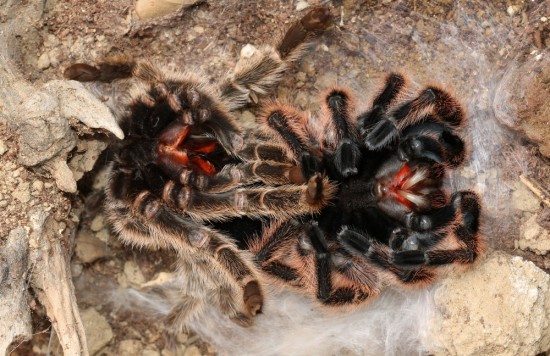
Babesiosis, also called piroplasmosis, is a type of anemia caused by parasites that can be transmitted to dogs or cats by ticks. It can also be transmitted by direct blood contact, such as when dogs fight with each other, and it can be transmitted from a mother to pups or kittens. Anemia, or a shortage of red blood cells, leads to other symptoms such as fever, low energy levels, and in severe cases, shock and death. If your cat or dog develops intermittent fever, anorexia, or loses energy rapidly, and especially if you live in an area where ticks are common, you should consider the possibility that your pet has babesiosis.
The disease is spread to dogs by two different species of ticks and to cats by several species. It is found in North and South American as well as Africa and Asia. Young dogs and cats are more likely to be infected than older animals, since some immunity can develop as cats and dogs mature. However, infections in older animals are more likely to be fatal. The most severe cases tend to occur in uninfected older animals who are brought into an area in which the disease occurs after living in a disease-free area previously. Babesiosis is especially common in Pit Bull terriers and in any dogs or cats with a history of fighting.
Your veterinarian can diagnose babesiosis with a blood test, but it can be hard to detect during certain stages of its development. Actually seeing the disease-causing protozoans in a smear of blood under a microscope provides a clear diagnosis, but in the absence of visible pathogens, other tests such as immunofluorescence and PCR analysis can be used. You veterinarian will likely consider the possibility that infected animals may also be infected with other tick-borne diseases at the same time and will arrange appropriate treatment.
Treatment of babesiosis can be successful if the disease is caught early. Imidocarb dipropionate is the most commonly used and successful medicine for babesiosis, but in some countries diminazene aceturate is also used. Combination therapy with atovaquone and azithromycin is sometimes useful when an infection has become chronic or fails to respond to the first treatment provided. In extremely serious cases, blood transfusion can be helpful. Although they are not available in the United States, in some countries vaccines are used to prevent babesiosis.
Tick control is very important, not only to prevent babesiosis, but also to prevent other diseases that can be spread by ticks. Dogs and cats who live in tick-infested areas and are allowed to be outside should be checked daily for ticks. Topical treatments are available for both dogs and cats that can be used to reduce tick bites, and in severely infested areas, spraying the outdoor areas frequented by your pets can help reduce exposure to ticks. Like most diseases, preventing babesiosis is better than treating it.
For more information on this and other topics related to care and training of your pets, visit http://www.trainyourdogsncats.com.
 Planning To Get a Dog? Consider Golden Doodles
Planning To Get a Dog? Consider Golden Doodles
Planning To Get a Dog? Consider Golden Doodles
Planning To Get a Dog? Consider Golden Doodles
 Treat Equine Ulcer Symptoms With Natural Supplements Available Online
Treat Equine Ulcer Symptoms With Natural Supplements Avail
Treat Equine Ulcer Symptoms With Natural Supplements Available Online
Treat Equine Ulcer Symptoms With Natural Supplements Avail
 Online pet shops will meet every demand of your pet!
Online pet shops will meet every demand of your pet!
Online pet shops will meet every demand of your pet!
Online pet shops will meet every demand of your pet!
 DIY Healthy Dog Treats
DIY Healthy Dog Treats
Less preservatives and
DIY Healthy Dog Treats
DIY Healthy Dog Treats
Less preservatives and
 Tarantulas And Moulting
Tarantulas And Mo
Tarantulas And Moulting
Tarantulas And Mo
Copyright © 2005-2016 Pet Information All Rights Reserved
Contact us: www162date@outlook.com